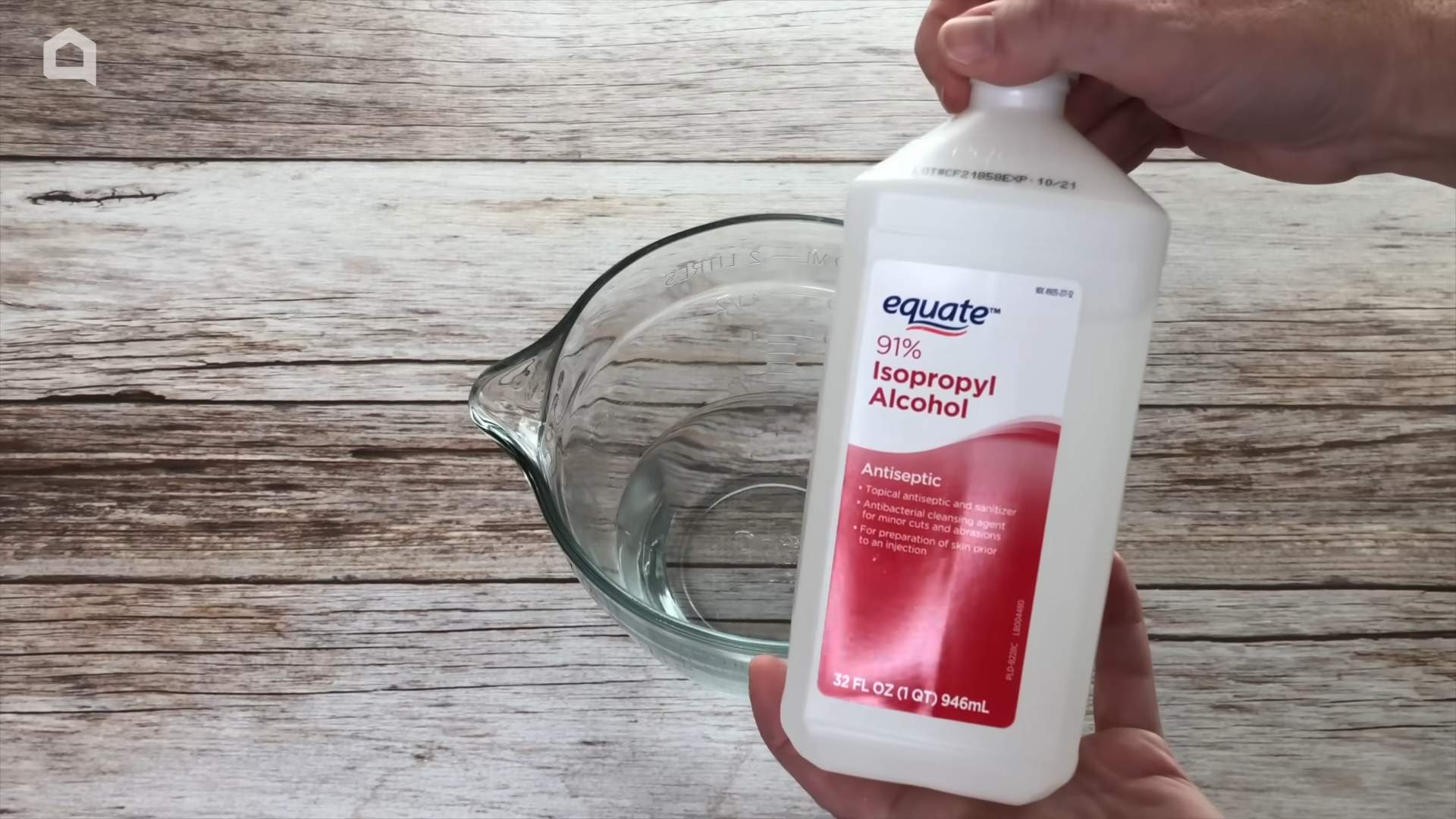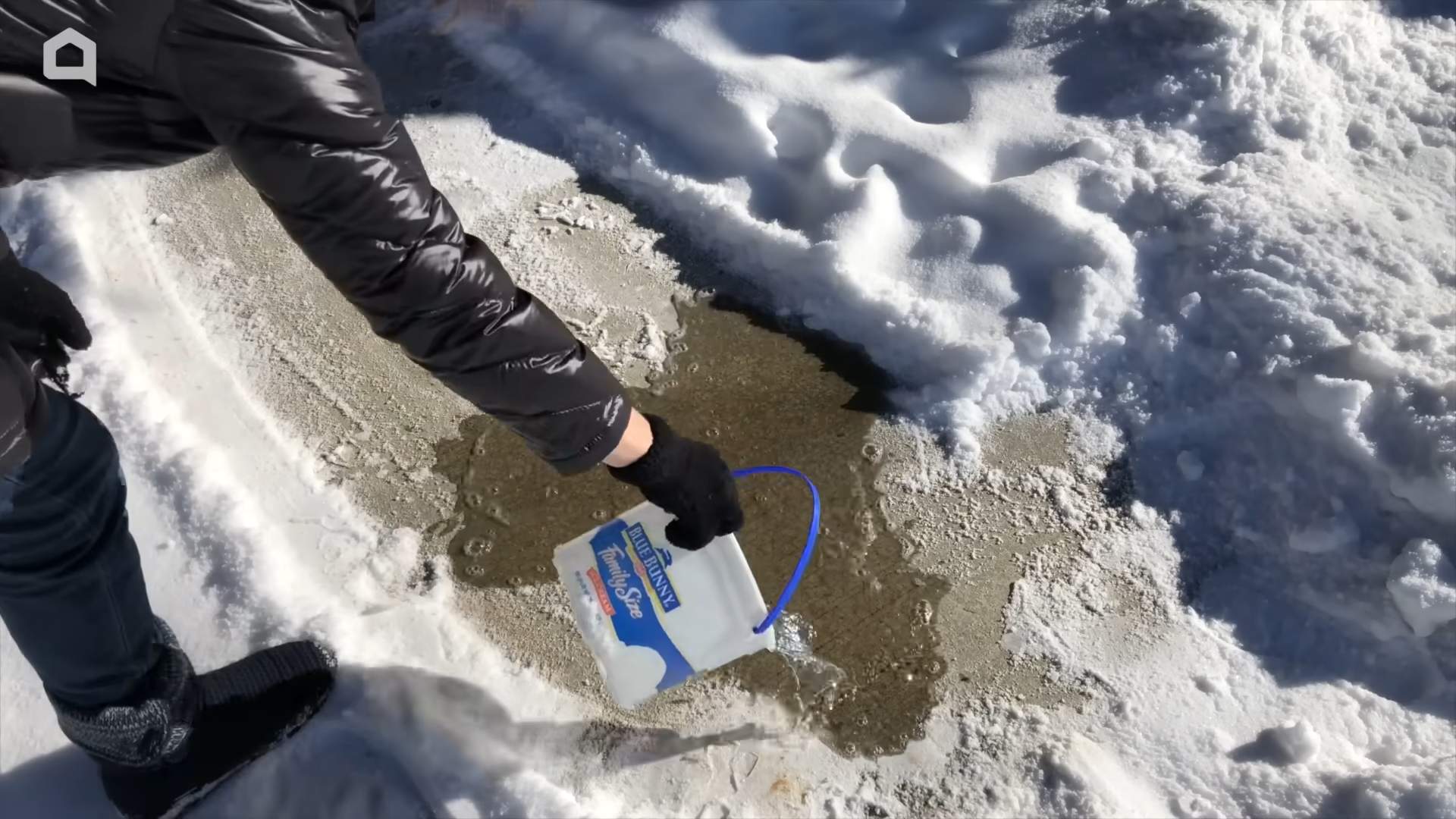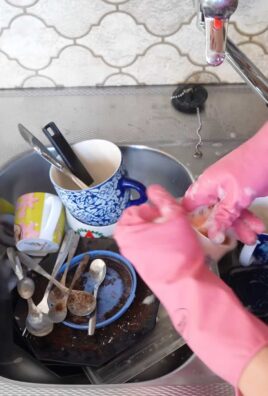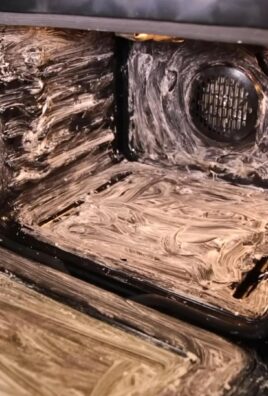Isopropyl Alcohol Cleaning Tips: Unlock the power of this everyday essential and transform your cleaning routine! Have you ever wondered how to achieve a sparkling clean without harsh chemicals and endless scrubbing? I’m here to tell you, the answer might already be sitting in your medicine cabinet.
For generations, isopropyl alcohol, also known as rubbing alcohol, has been a staple in homes for its antiseptic properties. But its uses extend far beyond first aid! From disinfecting surfaces to removing stubborn stains, this versatile liquid is a DIY cleaning powerhouse. Think of it as a secret weapon passed down through the ages, now ready to be unleashed on your toughest cleaning challenges.
In today’s world, we’re all looking for ways to simplify our lives and reduce our reliance on expensive, specialized cleaning products. That’s where these isopropyl alcohol cleaning tips come in. I’ll guide you through a range of clever hacks and techniques that will save you time, money, and effort. Imagine effortlessly banishing grime from your electronics, reviving dull chrome fixtures, and even tackling sticky residue with ease. This article is your ultimate guide to harnessing the full potential of isopropyl alcohol and creating a cleaner, healthier home, all with a single, affordable solution. Let’s get cleaning!

Isopropyl Alcohol: Your DIY Cleaning Superhero
Okay, let’s talk about isopropyl alcohol, also known as rubbing alcohol. This stuff is seriously amazing for cleaning, and I’m going to show you some of my favorite DIY hacks using it. It’s cheap, readily available, and a fantastic disinfectant. Just remember to always use it in a well-ventilated area and avoid contact with your eyes and skin. Let’s dive in!
Cleaning Electronics
Electronics are dust magnets, and cleaning them can be tricky. Water and electronics definitely don’t mix, but isopropyl alcohol is a safe and effective alternative.
What you’ll need:
* Isopropyl alcohol (70% or 91% is fine)
* Microfiber cloths
* Cotton swabs
* Small spray bottle (optional)
Step-by-step instructions:
1. Power down and unplug: This is crucial! Always turn off and unplug any electronic device before cleaning it. Safety first!
2. Prepare your cleaning solution: I usually dilute 91% isopropyl alcohol with distilled water to get around 70%. If you’re using 70% already, you can skip this step. You can either pour a small amount of alcohol onto a microfiber cloth or, for more controlled application, pour some into a small spray bottle.
3. Clean your phone screen: Lightly dampen a microfiber cloth with isopropyl alcohol. Gently wipe down your phone screen, paying attention to fingerprints and smudges. Avoid spraying directly onto the screen.
4. Clean your keyboard: Keyboards are notorious for collecting grime. Dampen a cotton swab with isopropyl alcohol and carefully clean around each key. For stubborn dirt, you can use a slightly stiffer brush, like an old toothbrush, also dampened with alcohol. Be careful not to get any liquid inside the keyboard.
5. Clean your laptop screen: Use the same method as with your phone screen – gently wipe with a lightly dampened microfiber cloth. Avoid excessive pressure.
6. Clean your mouse: Dampen a microfiber cloth and wipe down your mouse, paying attention to the buttons and scroll wheel.
7. Let it dry completely: Before turning your devices back on, make sure all the alcohol has evaporated completely. This usually only takes a few minutes.
Disinfecting Surfaces
Isopropyl alcohol is a powerful disinfectant, perfect for killing germs on frequently touched surfaces.
What you’ll need:
* Isopropyl alcohol (70% or 91%)
* Spray bottle
* Microfiber cloths
Step-by-step instructions:
1. Prepare your disinfectant spray: Pour isopropyl alcohol into a spray bottle. If you’re using 91%, you can dilute it with distilled water to get around 70%.
2. Spray the surface: Spray the surface you want to disinfect with isopropyl alcohol. Make sure to cover the entire area.
3. Let it sit: Allow the alcohol to sit on the surface for at least 30 seconds to effectively kill germs.
4. Wipe clean: Wipe the surface clean with a microfiber cloth.
5. Surfaces to disinfect: Think about all the surfaces you touch frequently: doorknobs, light switches, countertops, toilet handles, faucets, and your car’s steering wheel.
Removing Sticky Residue
Sticky residue from labels, tape, or glue can be a real pain to remove. Isopropyl alcohol to the rescue!
What you’ll need:
* Isopropyl alcohol (70% or 91%)
* Cotton balls or microfiber cloth
* Scraper (optional, for stubborn residue)
Step-by-step instructions:
1. Apply alcohol to the residue: Soak a cotton ball or microfiber cloth with isopropyl alcohol.
2. Let it soak: Press the alcohol-soaked cotton ball or cloth onto the sticky residue and let it sit for a few minutes. This allows the alcohol to break down the adhesive.
3. Wipe away the residue: After a few minutes, wipe away the residue with the cotton ball or cloth. You might need to scrub a little.
4. For stubborn residue: If the residue is particularly stubborn, you can use a plastic scraper (like a credit card) to gently scrape it away after soaking it with alcohol.
5. Clean the surface: Once the residue is gone, clean the surface with a clean cloth and some water to remove any remaining alcohol.
Cleaning Jewelry
Over time, jewelry can accumulate dirt, oils, and grime, making it look dull. Isopropyl alcohol can help restore its shine.
What you’ll need:
* Isopropyl alcohol (70% or 91%)
* Small bowl
* Soft-bristled toothbrush
* Microfiber cloth
Step-by-step instructions:
1. Soak your jewelry: Pour isopropyl alcohol into a small bowl and soak your jewelry for about 10-15 minutes.
2. Scrub gently: After soaking, use a soft-bristled toothbrush to gently scrub your jewelry, paying attention to any crevices or areas with built-up dirt.
3. Rinse with water: Rinse your jewelry thoroughly with water to remove any remaining alcohol and dirt.
4. Dry with a microfiber cloth: Dry your jewelry with a soft microfiber cloth.
5. Important note: This method is generally safe for most jewelry, but avoid using it on porous stones like pearls or opals, as the alcohol can damage them.
Cleaning Makeup Brushes
Dirty makeup brushes can harbor bacteria and lead to breakouts. Cleaning them regularly is essential for healthy skin.
What you’ll need:
* Isopropyl alcohol (70% or 91%)
* Small bowl or cup
* Paper towels
Step-by-step instructions:
1. Pour alcohol into a bowl: Pour a small amount of isopropyl alcohol into a bowl or cup.
2. Dip the brush bristles: Dip the bristles of your makeup brush into the alcohol, being careful not to submerge the entire brush head (this can loosen the glue holding the bristles in place).
3. Swirl on a paper towel: Swirl the brush bristles on a clean paper towel to remove makeup and dirt.
4. Repeat until clean: Repeat the dipping and swirling process until the brush bristles are clean.
5. Reshape and dry: Reshape the brush bristles and lay the brush flat on a clean paper towel to dry completely. This usually takes a few hours.
Removing Ink Stains
Ink stains can be frustrating, but isopropyl alcohol can often help lift them.
What you’ll need:
* Isopropyl alcohol (70% or 91%)
* Cotton balls or clean cloth
* Clean water
Step-by-step instructions:
1. Test in an inconspicuous area: Before applying alcohol to the stain, test it on a hidden area of the fabric to make sure it doesn’t damage or discolor it.
2. Blot the stain: Soak a cotton ball or clean cloth with isopropyl alcohol and gently blot the ink stain. Avoid rubbing, as this can spread the stain.
3. Repeat as needed: Repeat the blotting process with fresh cotton balls or cloths until the stain is lifted.
4. Rinse with water: Once the stain is gone, rinse the area with clean water to remove any remaining alcohol.
5. Launder as usual: Launder the item as usual.
6. Important note: This method works best on fresh ink stains. Older stains may be more difficult to remove.
Okay, let’s talk about isopropyl alcohol, also known as rubbing alcohol. This stuff is seriously amazing for cleaning, and I’m going to show you some of my favorite DIY hacks using it. It’s cheap, readily available, and a fantastic disinfectant. Just remember to always use it in a well-ventilated area and avoid contact with your eyes and skin. Let’s dive in!
Cleaning Electronics
Electronics are dust magnets, and cleaning them can be tricky. Water and electronics definitely don’t mix, but isopropyl alcohol is a safe and effective alternative.
What you’ll need:
* Isopropyl alcohol (70% or 91% is fine)
* Microfiber cloths
* Cotton swabs
* Small spray bottle (optional)
Step-by-step instructions:
1. Power down and unplug: This is crucial! Always turn off and unplug any electronic device before cleaning it. Safety first!
2. Prepare your cleaning solution: I usually dilute 91% isopropyl alcohol with distilled water to get around 70%. If you’re using 70% already, you can skip this step. You can either pour a small amount of alcohol onto a microfiber cloth or, for more controlled application, pour some into a small spray bottle.
3. Clean your phone screen: Lightly dampen a microfiber cloth with isopropyl alcohol. Gently wipe down your phone screen, paying attention to fingerprints and smudges. Avoid spraying directly onto the screen.
4. Clean your keyboard: Keyboards are notorious for collecting grime. Dampen a cotton swab with isopropyl alcohol and carefully clean around each key. For stubborn dirt, you can use a slightly stiffer brush, like an old toothbrush, also dampened with alcohol. Be careful not to get any liquid inside the keyboard.
5. Clean your laptop screen: Use the same method as with your phone screen – gently wipe with a lightly dampened microfiber cloth. Avoid excessive pressure.
6. Clean your mouse: Dampen a microfiber cloth and wipe down your mouse, paying attention to the buttons and scroll wheel.
7. Let it dry completely: Before turning your devices back on, make sure all the alcohol has evaporated completely. This usually only takes a few minutes.
Disinfecting Surfaces
Isopropyl alcohol is a powerful disinfectant, perfect for killing germs on frequently touched surfaces.
What you’ll need:
* Isopropyl alcohol (70% or 91%)
* Spray bottle
* Microfiber cloths
Step-by-step instructions:
1. Prepare your disinfectant spray: Pour isopropyl alcohol into a spray bottle. If you’re using 91%, you can dilute it with distilled water to get around 70%.
2. Spray the surface: Spray the surface you want to disinfect with isopropyl alcohol. Make sure to cover the entire area.
3. Let it sit: Allow the alcohol to sit on the surface for at least 30 seconds to effectively kill germs.
4. Wipe clean: Wipe the surface clean with a microfiber cloth.
5. Surfaces to disinfect: Think about all the surfaces you touch frequently: doorknobs, light switches, countertops, toilet handles, faucets, and your car’s steering wheel.
Removing Sticky Residue
Sticky residue from labels, tape, or glue can be a real pain to remove. Isopropyl alcohol to the rescue!
What you’ll need:
* Isopropyl alcohol (70% or 91%)
* Cotton balls or microfiber cloth
* Scraper (optional, for stubborn residue)
Step-by-step instructions:
1. Apply alcohol to the residue: Soak a cotton ball or microfiber cloth with isopropyl alcohol.
2. Let it soak: Press the alcohol-soaked cotton ball or cloth onto the sticky residue and let it sit for a few minutes. This allows the alcohol to break down the adhesive.
3. Wipe away the residue: After a few minutes, wipe away the residue with the cotton ball or cloth. You might need to scrub a little.
4. For stubborn residue: If the residue is particularly stubborn, you can use a plastic scraper (like a credit card) to gently scrape it away after soaking it with alcohol.
5. Clean the surface: Once the residue is gone, clean the surface with a clean cloth and some water to remove any remaining alcohol.
Cleaning Jewelry
Over time, jewelry can accumulate dirt, oils, and grime, making it look dull. Isopropyl alcohol can help restore its shine.
What you’ll need:
* Isopropyl alcohol (70% or 91%)
* Small bowl
* Soft-bristled toothbrush
* Microfiber cloth
Step-by-step instructions:
1. Soak your jewelry: Pour isopropyl alcohol into a small bowl and soak your jewelry for about 10-15 minutes.
2. Scrub gently: After soaking, use a soft-bristled toothbrush to gently scrub your jewelry, paying attention to any crevices or areas with built-up dirt.
3. Rinse with water: Rinse your jewelry thoroughly with water to remove any remaining alcohol and dirt.
4. Dry with a microfiber cloth: Dry your jewelry with a soft microfiber cloth.
5. Important note: This method is generally safe for most jewelry, but avoid using it on porous stones like pearls or opals, as the alcohol can damage them.
Cleaning Makeup Brushes
Dirty makeup brushes can harbor bacteria and lead to breakouts. Cleaning them regularly is essential for healthy skin.
What you’ll need:
* Isopropyl alcohol (70% or 91%)
* Small bowl or cup
* Paper towels
Step-by-step instructions:
1. Pour alcohol into a bowl: Pour a small amount of isopropyl alcohol into a bowl or cup.
2. Dip the brush bristles: Dip the bristles of your makeup brush into the alcohol, being careful not to submerge the entire brush head (this can loosen the glue holding the bristles in place).
3. Swirl on a paper towel: Swirl the brush bristles on a clean paper towel to remove makeup and dirt.
4. Repeat until clean: Repeat the dipping and swirling process until the brush bristles are clean.
5. Reshape and dry: Reshape the brush bristles and lay the brush flat on a clean paper towel to dry completely. This usually takes a few hours.
Removing Ink Stains
Ink stains can be frustrating, but isopropyl alcohol can often help lift them.
What you’ll need:
* Isopropyl alcohol (70% or 91%)
* Cotton balls or clean cloth
* Clean water
Step-by-step instructions:
1. Test in an inconspicuous area: Before applying alcohol to the stain, test it on a hidden area of the fabric to make sure it doesn’t damage or discolor it.
2. Blot the stain: Soak a cotton ball or clean cloth with isopropyl alcohol and gently blot the ink stain. Avoid rubbing, as this can spread the stain.
3. Repeat as needed: Repeat the blotting process with fresh cotton balls or cloths until the stain is lifted.
4. Rinse with water: Once the stain is gone, rinse the area with clean water to remove any remaining alcohol.
5. Launder as usual: Launder the item as usual.
6. Important note: This method works best on fresh ink stains. Older stains may be more difficult to remove.
Cleaning Eyeglasses
Keep your eyeglasses sparkling clean with isopropyl alcohol.
What you’ll need:
* Isopropyl alcohol (70% or 91%)
* Spray bottle (optional)
* Microfiber cloth
Step-by-step instructions:
1. Rinse with water: First, rinse your eyeglasses with water to remove any loose dirt or debris.
2. Apply alcohol: You can either spray isopropyl alcohol directly onto the lenses or dampen a microfiber cloth with alcohol.
3. Wipe clean: Gently wipe the lenses and frames with the microfiber cloth.
4. Dry with a clean cloth: Dry your eyeglasses with a clean, dry microfiber cloth.
Preventing Razor Rust
Extend the life of your razor by preventing rust with isopropyl alcohol.
What you’ll need:
* Isopropyl alcohol (70% or 91%)
Step-by-step instructions:
1. Rinse the razor: After each use, rinse your razor thoroughly with water to remove any hair or shaving cream.
2. Dip in alcohol: Dip the razor head into a small container of isopropyl alcohol. This will help to disinfect the blades and prevent rust.
3. Shake off excess alcohol: Shake off any excess alcohol

Conclusion
So, there you have it! Mastering the art of cleaning with isopropyl alcohol is not just a cleaning hack; it’s a gateway to a cleaner, healthier, and more efficient home. We’ve explored its versatility, from banishing stubborn stains to disinfecting surfaces with unparalleled ease. The sheer range of applications, coupled with its affordability and accessibility, makes this DIY cleaning trick an absolute must-try for anyone looking to streamline their cleaning routine.
But why is this method so compelling? It’s simple: isopropyl alcohol’s unique properties allow it to dissolve grease, grime, and even some adhesives that other cleaners struggle with. Its rapid evaporation minimizes the risk of water damage and streaks, leaving surfaces sparkling clean. Plus, its potent disinfecting capabilities make it an invaluable tool in the fight against germs and bacteria, especially in high-touch areas like kitchens and bathrooms.
Don’t just take our word for it, though. We encourage you to experiment and discover the many ways isopropyl alcohol can simplify your life. Start with the basics: cleaning your electronics, disinfecting your countertops, or removing sticky residue. As you become more comfortable, you can explore more advanced applications, such as reviving dried-out markers or creating your own custom cleaning solutions.
Variations and Suggestions:
* Scented Solutions: Add a few drops of your favorite essential oil to your isopropyl alcohol solution for a pleasant aroma. Lavender, lemon, and eucalyptus are excellent choices for a refreshing and clean scent.
* Surface-Specific Blends: For delicate surfaces like wood furniture, dilute the isopropyl alcohol with more water to prevent damage. Always test in an inconspicuous area first.
* DIY Hand Sanitizer: Combine isopropyl alcohol (at least 70% concentration) with aloe vera gel and a few drops of essential oil for a homemade hand sanitizer.
* Glass Cleaner Boost: Add a small amount of isopropyl alcohol to your regular glass cleaner for streak-free shine.
* Shoe Deodorizer: Spray the inside of your shoes with isopropyl alcohol to kill odor-causing bacteria. Let them air dry completely before wearing.
We are confident that once you experience the power of isopropyl alcohol cleaning, you’ll wonder how you ever lived without it. It’s a game-changer for anyone seeking a simple, effective, and budget-friendly cleaning solution.
Now, it’s your turn! We’re eager to hear about your experiences with isopropyl alcohol cleaning. Share your tips, tricks, and success stories in the comments below. Let’s build a community of cleaning enthusiasts and discover even more innovative ways to harness the power of this versatile substance. Your insights could help others transform their cleaning routines and achieve a cleaner, healthier home. Don’t hesitate to share any challenges you encounter as well; we’re here to help you troubleshoot and find solutions. Together, we can unlock the full potential of isopropyl alcohol and revolutionize the way we clean.
Frequently Asked Questions (FAQs)
What concentration of isopropyl alcohol is best for cleaning?
The ideal concentration of isopropyl alcohol for cleaning and disinfecting purposes is typically between 70% and 99%. While 99% isopropyl alcohol is highly concentrated, it evaporates very quickly, which can reduce its contact time with surfaces and potentially diminish its effectiveness as a disinfectant. A 70% solution, on the other hand, contains water, which slows down evaporation and allows the alcohol to penetrate cell walls more effectively, making it a more potent disinfectant. For general cleaning tasks, either concentration can be used, but for disinfecting, 70% is often recommended.
Is isopropyl alcohol safe to use on all surfaces?
While isopropyl alcohol is generally safe for use on many surfaces, it’s essential to exercise caution and test it in an inconspicuous area first, especially on delicate or sensitive materials. Avoid using it on acrylic, shellac, rayon, acetate, and certain types of plastic, as it can cause damage or discoloration. It’s also not recommended for use on painted surfaces, as it can strip the paint. For wood furniture, dilute the isopropyl alcohol with water and apply it sparingly. Always consult the manufacturer’s instructions for specific cleaning recommendations for your surfaces.
Can I use isopropyl alcohol to clean my electronics?
Yes, isopropyl alcohol is an excellent choice for cleaning electronics, as it evaporates quickly and doesn’t leave behind residue. However, it’s crucial to use a high concentration (90% or higher) and apply it carefully. Always turn off and unplug the electronic device before cleaning. Use a lint-free cloth or cotton swab dampened with isopropyl alcohol to gently wipe the surface. Avoid getting any liquid inside the device. For keyboards, you can use compressed air to remove loose debris before wiping with isopropyl alcohol.
How do I make a DIY hand sanitizer with isopropyl alcohol?
To make a DIY hand sanitizer, you’ll need isopropyl alcohol (at least 70% concentration), aloe vera gel, and optionally, a few drops of essential oil for fragrance. The World Health Organization (WHO) recommends a final alcohol concentration of 70-80% for effective hand sanitization. A common recipe is to combine 2 parts isopropyl alcohol with 1 part aloe vera gel. Mix the ingredients thoroughly and store the hand sanitizer in a clean, airtight container. Remember that homemade hand sanitizer may not be as effective as commercially produced sanitizers, so it’s still essential to wash your hands with soap and water whenever possible.
What are the safety precautions I should take when using isopropyl alcohol?
Isopropyl alcohol is flammable and can be harmful if ingested or inhaled in large quantities. Always use it in a well-ventilated area to avoid inhaling the fumes. Wear gloves to protect your skin from irritation, especially if you have sensitive skin. Keep isopropyl alcohol away from heat, sparks, and open flames. Store it in a tightly sealed container in a cool, dry place, out of reach of children and pets. If you accidentally ingest isopropyl alcohol, seek medical attention immediately.
Can isopropyl alcohol remove permanent marker stains?
Yes, isopropyl alcohol can often remove permanent marker stains from various surfaces. Dampen a clean cloth or cotton ball with isopropyl alcohol and gently blot the stain. Avoid rubbing, as this can spread the stain. Continue blotting until the stain is lifted. You may need to repeat the process several times. Once the stain is removed, clean the area with soap and water to remove any remaining residue. Test in an inconspicuous area first to ensure the isopropyl alcohol doesn’t damage the surface.
How can I use isopropyl alcohol to clean my bathroom?
Isopropyl alcohol is a versatile cleaner for bathrooms. You can use it to disinfect countertops, sinks, toilets, and shower surfaces. Spray the surface with isopropyl alcohol and let it sit for a few minutes before wiping it clean with a cloth or sponge. It’s also effective for removing soap scum and mildew. For stubborn stains, you can mix isopropyl alcohol with baking soda to create a paste. Apply the paste to the stain, let it sit for a few minutes, and then scrub it away with a brush or sponge.
Is isopropyl alcohol environmentally friendly?
Isopropyl alcohol is considered to be relatively environmentally friendly compared to some other cleaning chemicals. It breaks down quickly in the environment and doesn’t persist in the same way that some synthetic chemicals do. However, it’s still important to use it responsibly and avoid excessive use. Dispose of isopropyl alcohol and cleaning cloths properly, following local regulations. Consider using more sustainable cleaning alternatives whenever possible.
Can isopropyl alcohol be used to kill bed bugs?
While isopropyl alcohol can kill bed bugs on contact, it’s not a reliable or effective method for eliminating a bed bug infestation. Bed bugs are often hidden in cracks and crevices, and it’s difficult to reach them all with isopropyl alcohol. Furthermore, isopropyl alcohol evaporates quickly, so it may not stay in contact with the bed bugs long enough to kill them. For effective bed bug control, it’s best to consult with a professional pest control service.
How do I store isopropyl alcohol safely?
Store isopropyl alcohol in a tightly sealed container in a cool, dry, and well-ventilated place. Keep it away from heat, sparks, open flames, and other sources of ignition. Store it out of reach of children and pets. Do not store it near incompatible materials, such as strong oxidizing agents. Label the container clearly to indicate that it contains isopropyl alcohol and to warn of its flammability.




Leave a Comment